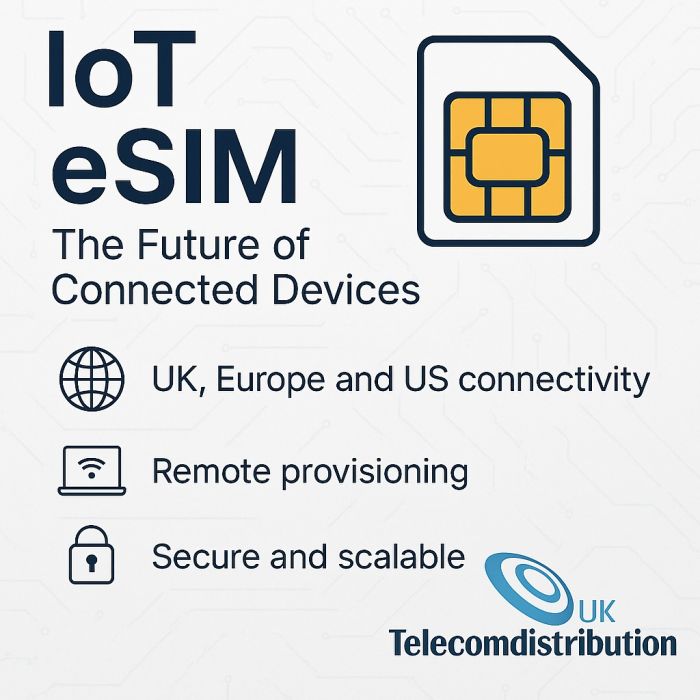Weather Station eSIM
Weather Station eSIM Reliable IoT eSIM for weather stations, air quality sensors, and climate monitoring systems. Provides multi-network coverage, secure data transfer, and remote activation—enabling smarter environmental monitoring and climate awareness.
Weather Station eSIM – Environmental Monitoring Connectivity
Empower environmental monitoring and climate awareness with the Weather Station eSIM, a dedicated IoT/M2M connectivity solution for weather stations, air quality sensors, and climate monitoring systems. Designed for reliability in both urban and remote locations, this eSIM ensures continuous data transmission for environmental research, smart cities, and climate adaptation projects.
With multi-network coverage, WeatherStation eSIM automatically connects to the strongest available signal, guaranteeing uninterrupted monitoring even in challenging outdoor environments. It supports low-power IoT devices such as remote weather sensors and high-data devices like environmental stations transmitting real-time analytics. Remote provisioning (OTA) makes it easy to activate and manage profiles without physical SIM handling, making it ideal for long-term and large-scale environmental projects.
Key Features
-
IoT/M2M-optimized – designed for weather monitoring, air quality sensors, and climate systems.
-
Multi-network connectivity – automatically selects the strongest carrier, ensuring 24/7 monitoring.
-
Remote provisioning (OTA) – activate and update eSIM profiles without swapping SIMs.
-
Secure communication – encrypted data transfer for safe environmental reporting.
-
Low-power compatibility – ideal for remote sensors running on battery or solar power.
-
Scalable solution – manage single stations or entire climate-monitoring networks.
-
Future-proof – GSMA-compliant eSIM designed for long-term environmental projects.
Benefits
-
Weather monitoring – reliable connectivity for remote or urban weather stations.
-
Air quality management – connect air pollution and CO₂ monitoring sensors for healthier cities.
-
Climate research – transmit environmental data for scientific studies and adaptation programs.
-
Disaster preparedness – enable real-time monitoring for flood, storm, and wildfire risk detection.
-
Smart cities – support sustainability and environmental awareness with IoT-powered monitoring.
Use Cases
-
Weather Stations – collect real-time data on temperature, humidity, rainfall, and wind.
-
Air Quality Sensors – monitor pollution levels and greenhouse gases.
-
Climate Monitoring Systems – support environmental protection and climate research.
-
Disaster Management – provide early warning data for storms, floods, and wildfires.
-
Smart Infrastructure – integrate environmental IoT sensors into smart cities.
Technical Highlights
-
Form Factor: eSIM (embedded / QR activation).
-
Network Type: LTE/4G, LTE-M, NB-IoT, fallback to 3G/2G.
-
Management: OTA provisioning & remote updates.
-
Data Profile: Low (sensors) to high (stations with real-time streaming).
-
Device Compatibility: Weather stations, air quality sensors, climate monitoring equipment.
FAQ – Weather Station eSIM
1. What is Weather Station eSIM?
It’s a connectivity solution for IoT-based weather and climate monitoring devices, ensuring 24/7 environmental data transmission.
2. Where can it be used?
In weather stations, air quality sensors, climate monitoring systems, and smart city projects worldwide.
3. Do I need Wi-Fi for it to work?
No, the eSIM uses mobile networks, making it perfect for remote areas without Wi-Fi.
4. Is it reliable in rural areas?
Yes, with multi-network coverage, it connects to the strongest available carrier signal.
5. How is it activated?
Via QR code or embedded provisioning; no need to insert or replace physical SIMs.
6. Is it secure?
Yes, all data transfers are encrypted to ensure safe and reliable climate monitoring.
7. Can it support multiple devices?
Yes, you can manage entire sensor networks with one scalable eSIM solution.
| Country Coverage and Roaming Partners | (EU & Non-EU): United Kingdom, Austria, Belgium, Bulgaria, Croatia, Cyprus, Czech Republic, Denmark, Estonia, Finland, France, Germany, Greece, Hungary, Ireland, Italy, Latvia, Liechtenstein, Lithuania, Luxembourg, Malta, Netherlands, North Macedonia, Norway, Poland, Portugal, Romania, Serbia, Slovak Republic, Slovenia, Spain, Sweden, Switzerland Eastern Europe: Belarus North America: United States |
|---|

